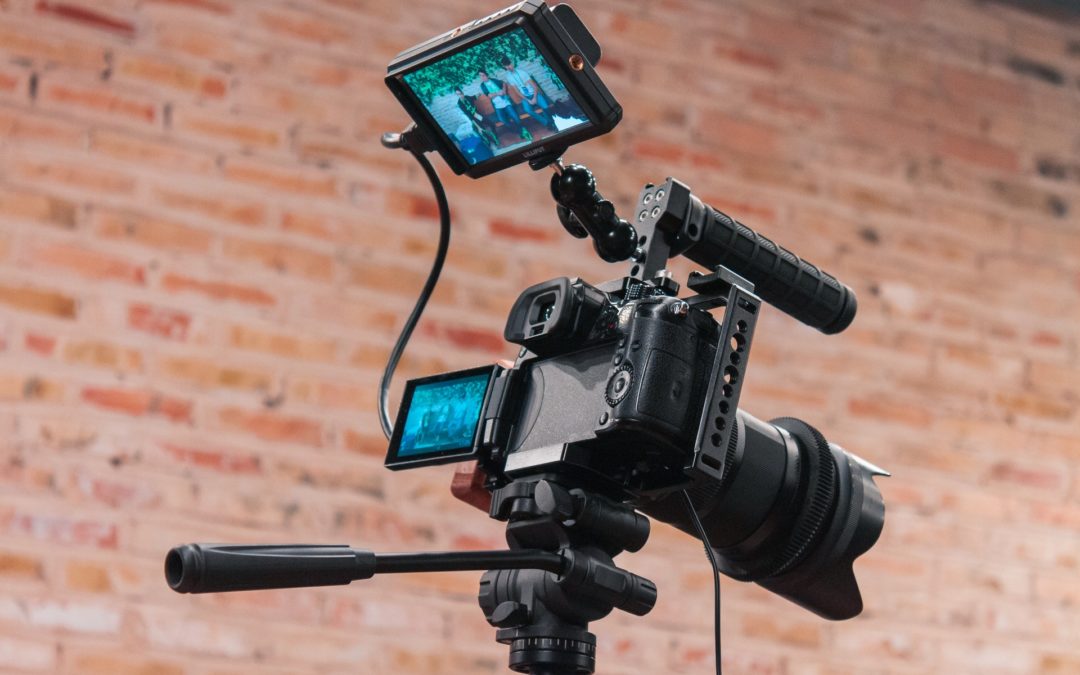Making your videos look more professional is more technique than tools, so don’t worry too much about your budget.
Here are 10 tips to help you create compelling video content:
PRE-PRODUCTION
1. Plan your videos in advance.
Before you even get your camera out, you need to know the answers to the following questions:
- What do you want to achieve?
- Who do you want to reach?
- What are the consequences of making this video?
- What can you shoot?
It helps to map out a timeline or a storyboard before you hit ‘Record’.
PRODUCTION
2. Use plenty of light.
Whether you’re shooting indoors or outdoors, you need to make the most of the light, especially natural light. Make sure there aren’t any silhouettes or shadows caused by bad light positions – such as a subject standing in front of a window. If you wear spectacles, make sure that you hold your head in a position where the light doesn’t reflect off them.
3. Consider the background.
Be intentional with what is behind you. While the background should never be a distraction, it could be an addition depending on the video topic. If you’re talking about new traffic calming measures, having a busy road in the background could enhance the message, (although you would need to think about audio levels).
4. Check audio quality.
Usually your audio quality is more important than your video quality, as most people are willing to watch a video that is not shot in HD, or is a little bit grainy. But if the audio quality is poor you will soon find people switching off. You also have more leeway with social video as around 85% of people watch videos muted. Depending on your budget, you may want to consider getting a lapel microphone to plug into your phone or camera.
5. Watch your framing.
Think about where everything and everyone is positioned in the shot. Is the top of their head cut out? Is the camera eye-level? Does everything look straight? Will the footage be shaky? Avoid unnecessary pans and zooms. There are times to follow the action, but if you are filming something let the motion that’s happening naturally in the video dominate the video. Keep your camera static as much as possible. Stop yourself from adding random zooms and pans, which distract from the action. Your camera should act as a single vantage point and not move itself.
6. Cultivate your camera presence.
The way you carry yourself on camera has an enormous impact on how professional your content looks. Appearing nervous, fidgety, or uncomfortable on camera will distract viewers from your message.
- Use calm, open body language and stand up straight.
- Take deep breaths.
- Don’t cross your arms, but you can use your hands.
- Imagine you are talking to a neighbour or friend.
- Reflect the mood, tone and emotion of the video topic.
- Slow down when you talk so that you speak clearly.
- Practise, practise, practise. Watch footage of yourself and identify the areas where you could improve.
7. Gather B-roll footage.
B-roll is the extra footage captured to enrich the story you’re telling and can give you greater flexibility when editing, for example, when cutting between different shots. It also sets the scene. So, if you’re making a video about local library closures, capturing footage of local libraries, bookshelves, opening times and people reading could be used in your sequence under narration. Every shot should tell a story. B-roll is there to provide additional context and depth to your story. Don’t just stick in clips for the sake of it.
Remember to seek permission from people before recording them or private property and never film minors without parental consent.
POST-PRODUCTION
8. Adding music.
You may want to consider adding music to your video and choosing the right track can be difficult. Here’s what you need to consider:
- What emotions are you evoking?
- What’s the overall mood?
- Remember the role of music is to support the video, not the other way around.
- Get the volume right.
- Understand the music rights for the chosen track and whether you have permission to use it.
9. Adding captions.
Studies show that around 85% of all videos on social media platforms are watched muted. Captions are a great way to increase engagement and retention, and also an important step in connecting with people who are deaf, or hard-of-hearing. Captions can be a drain on your time, budget or resources, so you need to consider the consequences. If you do use captions, ensure they match the audio perfectly and check spelling and grammar. Badly written captions would only be a distraction.
10. Think about the thumbnail.
Hours of video content are uploaded every single minute to social media platforms, so it can be difficult to share your story and reach the right people. That means you need to do everything you can to get your video content in front of the right people, at the right time, using the right social media channel. Along with using tags, engaging titles and descriptive posts, the most effective thing you can do is make sure your thumbnails invite click-through. Make your thumbnails visually appealing by adding a human face to forge an emotional connection, add your branding to increase awareness and add some text to describe what viewers can expect. Look at other examples and analyse what you think works, and why.
If you go through this process every time you make a video, you are on your way to producing engaging content that will become a massive part of your movement.
If you want to learn more about making videos that people want to watch, buy my new eBook!

